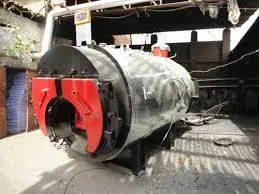
Sep . 16, 2024 00:12 Back to list
Comprehensive Steam Boiler Checklist for Safety and Efficiency
Steam Boiler Checklist Essential Maintenance for Efficiency and Safety
Steam boilers play a critical role in various industries, supplying heat and power for processes ranging from manufacturing to heating buildings. However, the efficient and safe operation of steam boilers requires regular maintenance and thorough inspections. A comprehensive checklist can help operators ensure that their steam boilers are functioning optimally and adhering to safety standards.
1. Visual Inspection
Conduct a visual inspection of the entire boiler system. Check for signs of leaks, corrosion, or any physical damage to the boiler shell, pipes, and fittings. Inspect all valves and gauges to ensure they are in good condition and operational. Pay special attention to areas where water gathers, as these are prone to corrosion.
2. Water Level and Quality
Regularly check the water level in the boiler to ensure it's within the recommended operating range. Low water levels can cause serious damage, while high levels can lead to water carryover. Additionally, test the water quality for purity, checking for dissolved solids, pH levels, and contaminants. Maintaining proper water chemistry is crucial to prevent scaling and corrosion within the boiler.
3. Burner and Combustion System
Inspect the burner and combustion system regularly. Ensure that there are no blockages in the combustion air intake, and check that the burner is igniting properly. Monitor the flame pattern and color to ensure efficient combustion. Clean any carbon build-up from the burner and adjust the air-to-fuel ratio for optimal performance.
4. Pressure and Temperature Settings
steam boiler checklist

Verify that the pressure and temperature settings are within the manufacturer's specifications. Check the pressure relief valve to ensure it functions correctly, as it is vital for maintaining safe operating pressure. Keep an eye on the temperature gauge to avoid overheating, which can lead to failure and potential hazards.
5. Safety Controls and Alarms
Ensure that all safety controls and alarms are operational. Test the low-water cutoff, high-pressure limit switch, and all other safety devices as per the manufacturer’s recommendations. Regular testing of these components can prevent accidents and ensure that the boiler shuts down safely in case of a malfunction.
6. Cleaning and Maintenance
Establish a cleaning schedule for the boiler and its components. Regularly inspect and clean the boiler tubes, blowdown valves, and sediment collection areas to prevent the build-up of sludge and soot. Additionally, service the boiler based on operational hours or annually as recommended.
7. Documentation and Reporting
Finally, maintain accurate records of all inspections, maintenance, and repairs performed on the boiler. This documentation is vital for compliance with safety regulations and can be beneficial during audits or inspections by regulatory bodies. It also helps in tracking performance issues or recurring problems.
In conclusion, regular maintenance and inspections are paramount for the safe and efficient operation of steam boilers. Utilizing a detailed checklist can help operators identify potential issues before they escalate, ensure compliance with safety standards, and ultimately extend the lifespan of the system. A proactive approach to boiler maintenance not only enhances operational efficiency but also safeguards workers and the environment.
-
High-Efficiency Commercial Oil Fired Steam Boiler for Industry
NewsJul.30,2025
-
High-Efficiency Biomass Fired Thermal Oil Boiler Solutions
NewsJul.30,2025
-
High Efficiency Gas Fired Thermal Oil Boiler for Industrial Heating
NewsJul.29,2025
-
High-Efficiency Gas Fired Hot Water Boiler for Sale – Reliable & Affordable
NewsJul.29,2025
-
High Efficiency Biomass Fired Hot Water Boiler for Industrial and Commercial Use
NewsJul.29,2025
-
High-Efficiency Biomass Fired Hot Water Boiler for Industrial Use
NewsJul.28,2025
Related PRODUCTS






















